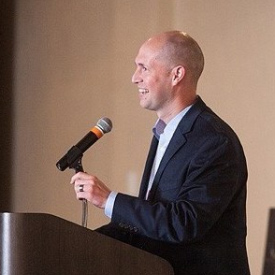Neighborliness: On a Shared Life
Over the last several weeks, my mind has swirled about with questions of community, conversation, and neighborliness. I have posed questions to the CiRCE reader community: How do we remake the lost places of conversation? What does it mean to be neighborly? What is real community? I cannot say, for sure, if I have answered any of them.
The trouble is, such questions are not reducible to a formula and, as I have found in my own thoughts, often the answers come in picture form. To date, I have produced no pie chart that can define conversation, but I know when I have had one – a great conversation, that is. I could not easily pen a bullet-point list of what it means to be a “good” neighbor, nor am I entirely sure I would want to; but, I know good neighbors when I have them.
My family and I live in a typical suburban neighborhood – too many houses on too little land, built by developers who were unaware that you can steer around trees. It is not a large neighborhood, but many of the people are difficult to know. They drive straight into their garage each night and seldom see daylight. But, I have some wonderful neighbors as well.
Directly across the street live, for my part, the best neighbors I have ever had. Our friendship is one of giving, borrowing, sharing, laughing, serving, hauling, talking, cooking, planting, visiting, and occasionally running into each other’s mailboxes while coming out of the driveway. Our households lack perfection – I have my shortcomings as a neighbor and, for the record and for posterity’s sake, we’ve never hit their mailbox – but we do pretty well by each other.
In other words, when I think of neighborliness, I think of my neighbors, not definitions. I think of Josh, Noelle, and their children. I picture a life, connected by concern, interdependence, and love for one another. In reality, that is the only good way to define neighborliness and community. It is a shared life.
Wendell Berry, through the character of Jayber Crow, wrote:
“I have got to the age now where I can see how short a time we have to be here. And when I think about it, it can seem strange beyond telling that this particular bunch of us should be here on this little patch of ground in this little patch of time, and I can think of the other times and places I might have lived, the other kinds of man I might have been. But there is something else. There are moments when the heart is generous, and then it knows that for better or worse our lives are woven together here, one with one another and with the place and all the living things.”
It would seem that part of neighborliness lies in the acceptance of our place – where we are, when we are, and who joins us there. The quirkiness and difficulty of people do not excuse us from what we ought to be or free us from the call of neighborliness (Romans 12:18; Matthew 5:44-47).
Consider then, parents and teachers, what we ought to model before the watching eyes of our children and students. Do they see interdependence or selfishness? Are we painting a picture of a shared life or one segmented and broken off from others? Based on our example, how would they learn to deal with difficulty and the people that cause it? Do we have generous hearts that know “that for better or worse our lives are woven together here”?

Brian Phillips
Dr. Brian Phillips serves as a pastor in Concord, NC, where he lives with his wife and their four children.










